Introducing clovers back into crop rotations for crop, livestock and soil health benefits
| Project start date: | 15 June 2025 |
| Project end date: | 01 March 2029 |
| Project status: | In progress |
| Livestock species: | Grass-fed Cattle, Sheep |
| Relevant regions: | Southern Australia, Victoria |
| Site location: | VIC |
Summary
Mixed farming systems in South West Victoria are facing significant challenges due to declining soil organic carbon (SOC) levels, leading to reduced nitrogen availability, increased fertiliser costs, and environmental concerns. Additionally, limited crop rotation diversity has contributed to weed and pest pressures, while seasonal feed gaps are impacting livestock productivity and increasing reliance on costly supplementary feed. Farmers are also motivated to reduce greenhouse gas emissions to meet market demands and future regulatory expectations.
This PDS project, a collaboration between Meat & Livestock Australia, GRDC, and Southern Farming Systems, aims to demonstrate the strategic integration of clovers into crop rotations as a solution to these issues. By establishing six demonstration sites and engaging a core group of producers, the project will evaluate the nitrogen contribution, soil health improvements, weed and disease suppression, and livestock feed benefits of various clover species. The intended outcome is to provide farmers with credible, region-specific insights and practical tools to enhance whole farm profitability, resilience, and sustainability through clover-based systems.
Objectives
By July 2028, in South West Victoria the project will establish 6 demonstration sites to be monitored over 3 years engaging 10 core producers and 200 observer producers and agronomists to:
- Determine the extra soil N production of at least 6 different clovers or clover mixes that would be available to a subsequent crop and any effects on subsequent crop yield and quality (protein).
- Capture additional health benefits or agronomy benefits such as the clover providing a disease and weed break.
- Quantify the animal production benefits of these legumes by measuring quantity and quality of feed.
- Farmers capture grazing benefits of the clovers in the system by recording length of grazing periods, stock class (DSE Grazing days), increase in liveweight gains or productivity increases.
- Conduct a cost benefit analysis of each system and compare the profitability of the “integrated rotation” versus the “standard rotation” which includes any of the benefits captured and nitrogen fertiliser savings.
- Understand the risk of changing the balance of crop to pasture and how this impacts long term risk.
- The core group of farmers determines and makes recommendations on what clover species or varieties work best in southwest Victoria for addressing different farmers aspirations and needs and this is turned into a legacy factsheet product.
- Use the demonstrations, farmer’s and agronomist experience to determine the agronomic and livestock management practices needed to make non-oestrogenic and clover introduction and management successful, such as if hard-seeded certified varieties can regenerate without the need for
sowing in short rotations, the control of grass or other broadleaf weeds, livestock management issues on large cropped paddocks that potentially have no water supply, and timing of clover termination. - Conduct an annual field tour each year, which showcases different demonstration sites and discuss results at two SFS events per year (e.g. SFS trial results day, Agrifocus field day) to encourage adoption of clover integration and appropriate management by 150 attending producers.
- Create and share 6 producer case study stories on different farmers' results and experiences with trialling different varieties with an audience of 1000 producers.
- To have at least 50 additional farmers (in addition to 100% of the core producers) with the knowledge, skills and confidence who have adopted/or intend to adopt clovers into their rotations.
- Conduct an impact evaluation of the project, with alignment to MLA Extension Program Monitoring
and Evaluation Framework.


